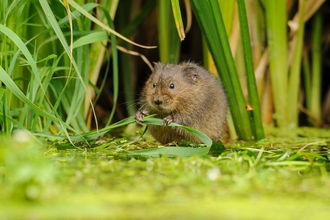Sadly, the overall news isn’t good; the State of Nature report, published in late September 2023 by a partnership of over 60 conservation organisations, finds that small mammals such as mice, voles and shrews, have declined by 29% since 1970. Coincidentally that’s the same landmark year that my teenage self began to pursue a more in-depth interest in mammals in favour of almost equally fascinating birdlife… but despite my notorious passion for bones and the mammal skeleton, I’m not solely responsible for that shocking decline!
Apart from the sobering State of Nature news, and on a more optimistic note, there is still much to learn and delight us in the often-unseen world of mammals. Shropshire’s well-known pine martens and eagerly anticipated beavers continue to hold local attention, but a cheap wildlife camera can offer remarkable insight into what creatures may be visiting your garden, which need not be very big – or very wild – in order to offer a home to small mammals or indeed to attract others. I’m lucky to live in a very rural location, just a few hundred metres over the Shropshire border and surrounded by grazing fields, but my cameras have detected a whole menagerie of mammals: Field vole, Bank vole, Wood mouse, Brown rat, Pygmy shrew, Common shrew, Water shrew, Mole, Weasel, Hedgehog, Brown hare, Grey squirrel, Badger plus some random unidentified bats.






